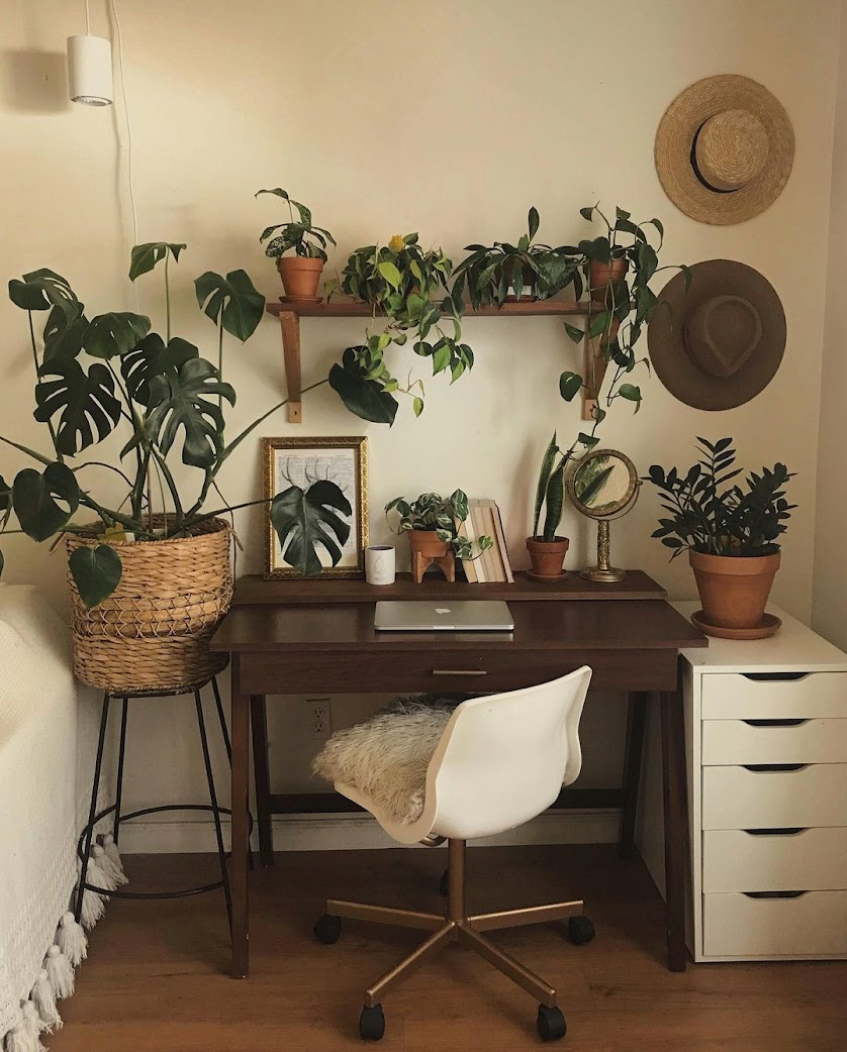
Proper watering is key to keeping your indoor plants healthy and thriving, but finding the right balance between overwatering and underwatering can be tricky. This guide provides all the information you need on selecting the ideal watering can and mastering various watering techniques for indoor plants. Discover expert tips and tricks to keep your houseplants hydrated and flourishing!
Choosing the Right Watering Can for Your Plants
Selecting the best watering can is essential for efficient plant care. Consider these factors:
• Material: Watering cans come in plastic, metal, and ceramic options. Plastic cans are lightweight and affordable, but may not be as durable. Metal cans are sturdy and long-lasting, but can be heavy when full. Ceramic cans are visually appealing but fragile.
• Capacity: Pick a can size that matches your indoor garden. Smaller cans are suitable for a few plants, while larger cans work better for extensive collections or high water needs.
• Spout Design: The spout affects water flow and precision. Long, narrow spouts are great for reaching the base of plants with dense foliage, while a rose attachment offers a gentle flow for delicate plants.
For stylish options, check out our blog post “10 Gorgeous Watering Cans For Your Indoor Garden Oasis” featuring beautiful and functional designs.

Understanding Your Plant’s Water Needs
Different houseplants have unique water requirements. Here’s how to determine the right amount of water:
• Research Plant Needs: Each plant has specific watering needs based on its natural habitat. Research to determine the right frequency and amount.
• Monitor Soil Moisture: Regularly check soil moisture with your finger or a moisture meter. Most indoor plants prefer slightly moist soil, while succulents and cacti need dry soil between waterings. A moisture meter can help you accurately assess soil moisture levels. For the best options, read this article on the best moisture meters.
• Observe Plant Responses: Watch for signs of overwatering or underwatering. Yellow leaves, wilting, and root rot suggest overwatering, while brown tips, curling leaves, and slow growth indicate underwatering.
Learn more about watering your houseplants here.
Watering Techniques for Different Plant Types
Using the right watering technique ensures your plants get the water they need:
• Surface Watering: Pour water directly onto the soil around the plant base. Suitable for most plants but avoid wetting foliage to prevent fungal growth.
• Bottom Watering: Place the plant pot in a water-filled tray, allowing absorption through drainage holes. Great for plants with delicate foliage or prone to root rot.
• Misting: Ideal for tropical plants like ferns and orchids that need humidity. Use a fine mist to maintain moisture without overwatering.
• Watering Bulbs and Drip Systems: These self-watering devices provide consistent moisture and are perfect for plants with specific water needs or for when you’re away.
When to Water Your Indoor Plants
Timing your watering is as important as the amount. Follow these guidelines:
• Morning Watering: Water in the morning to allow absorption before heat causes evaporation, reducing the risk of fungal growth.
• Adapt to Seasons: Adjust watering schedules with the seasons—more water during growth (spring/summer) and less during dormancy (fall/winter).
• Consider Environmental Factors: Temperature, humidity, and light affect water needs. Plants in warmer, brighter spots may need more water than those in cooler, darker areas.
Choosing the Best Water for Your Plants
The quality of water affects plant health. Here are some tips:
• Tap Water: Convenient but may contain minerals or chemicals harmful to sensitive plants. If you notice white residue, consider alternatives. For managing salt build-up, read our blog on “How To Manage Salt Build-Up in Indoor Plants”.
• Filtered or Distilled Water: Ideal for sensitive plants, as it’s free from impurities and excess minerals.
• Rainwater: An eco-friendly option that’s naturally soft and chemical-free, perfect for plant growth. Store properly and use within a few weeks.
Water Add-ins
Bio insecticides and fungicides are natural pest control solutions designed to protect your plants from harmful insects and fungal infections, like aphids, spider mites, and fungus gnats. While these products are typically applied as a spray directly to the foliage or soil, some systemic insecticides can be watered in to be absorbed by the plant roots, providing ongoing protection.
Adding them to your watering routine can be beneficial if your plants have a recurring pest or fungal problem, as it allows for more thorough and consistent application. However, it’s important to use these products only when necessary to avoid harming beneficial soil organisms or causing resistance in pests.
If you decide to add bio insecticides or fungicides to your water, make sure to follow the manufacturer’s dilution instructions carefully for safe and effective use. Here are some brands to check out:

1. Arber - Organic plant care products like bio-fungicides, insecticides, and fertilizers for healthier plants without harmful chemicals.
2. We the Wild - Offers plant care products designed for indoor plants, including growth and support tonics made from organic, sustainable ingredients.
Other Smaller Plant Care Brands:
1. Urban Leaf: Natural plant food and organic pest control for urban gardeners and indoor plants.
2. Bloem Living: Eco-friendly fertilizers and gardening tools promoting sustainable plant care.
3. Joyful Dirt: Organic, easy-to-use fertilizers specifically for houseplants and succulents.
4. Espoma Organic: Family-owned, organic fertilizers, and potting mixes.
5. EarthPods: Pre-measured organic fertilizer capsules for various plant types.
6. Neem Bliss: 100% cold-pressed neem oil for natural pest control.
7. FoxFarm: High-quality, organic soils, fertilizers, and pest solutions.
8. Dyna-Gro: Liquid nutrients and supplements for robust plant growth.
Mastering indoor plant watering is vital for healthy, vibrant plants. By choosing the right watering can, understanding water needs, using proper techniques, and paying attention to timing and water quality, you’ll ensure your houseplants remain well-hydrated and thriving. Watering can also be a relaxing time to focus on your plants and unwind. We hope you enjoy this experience as much as we do!



